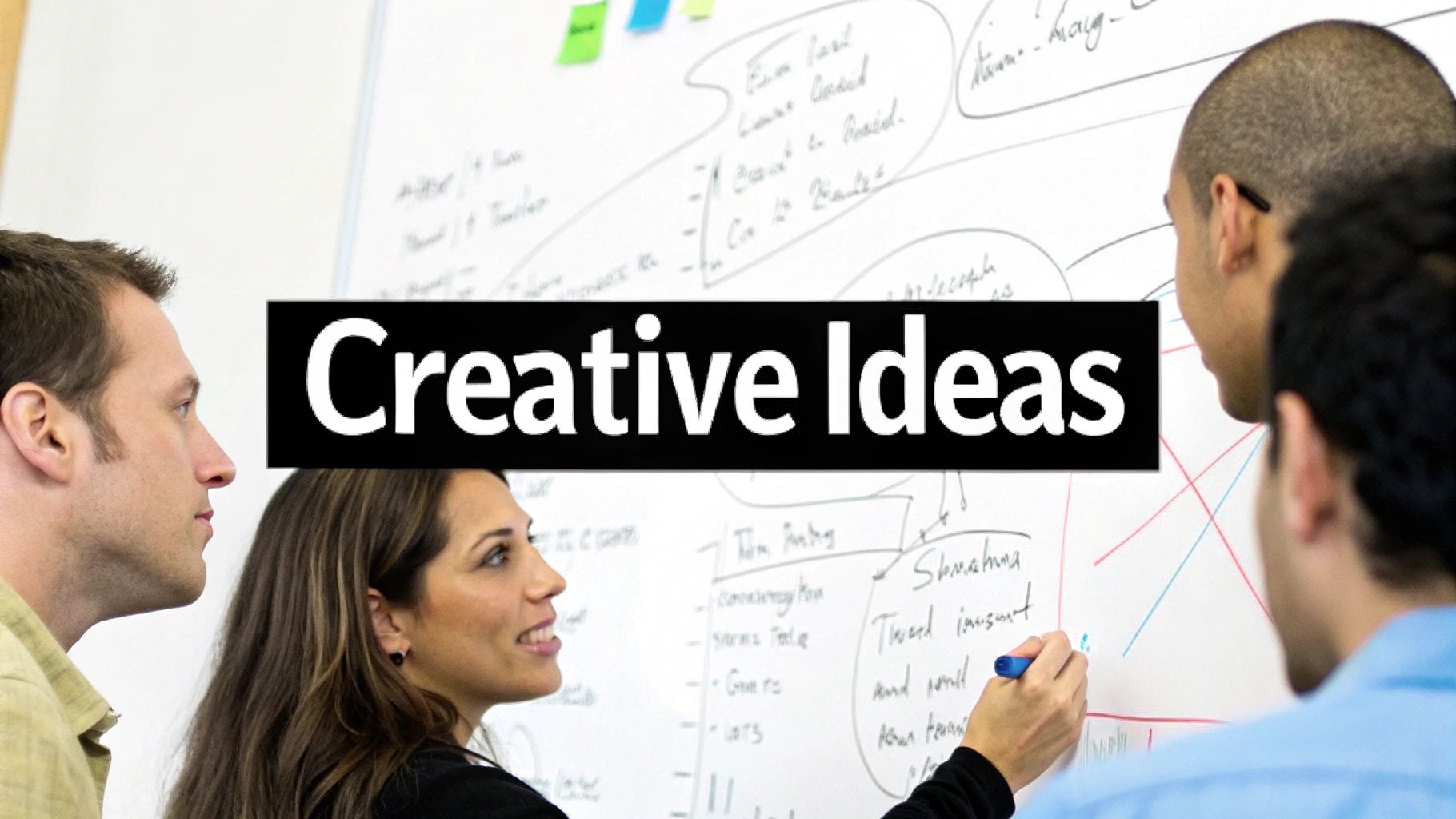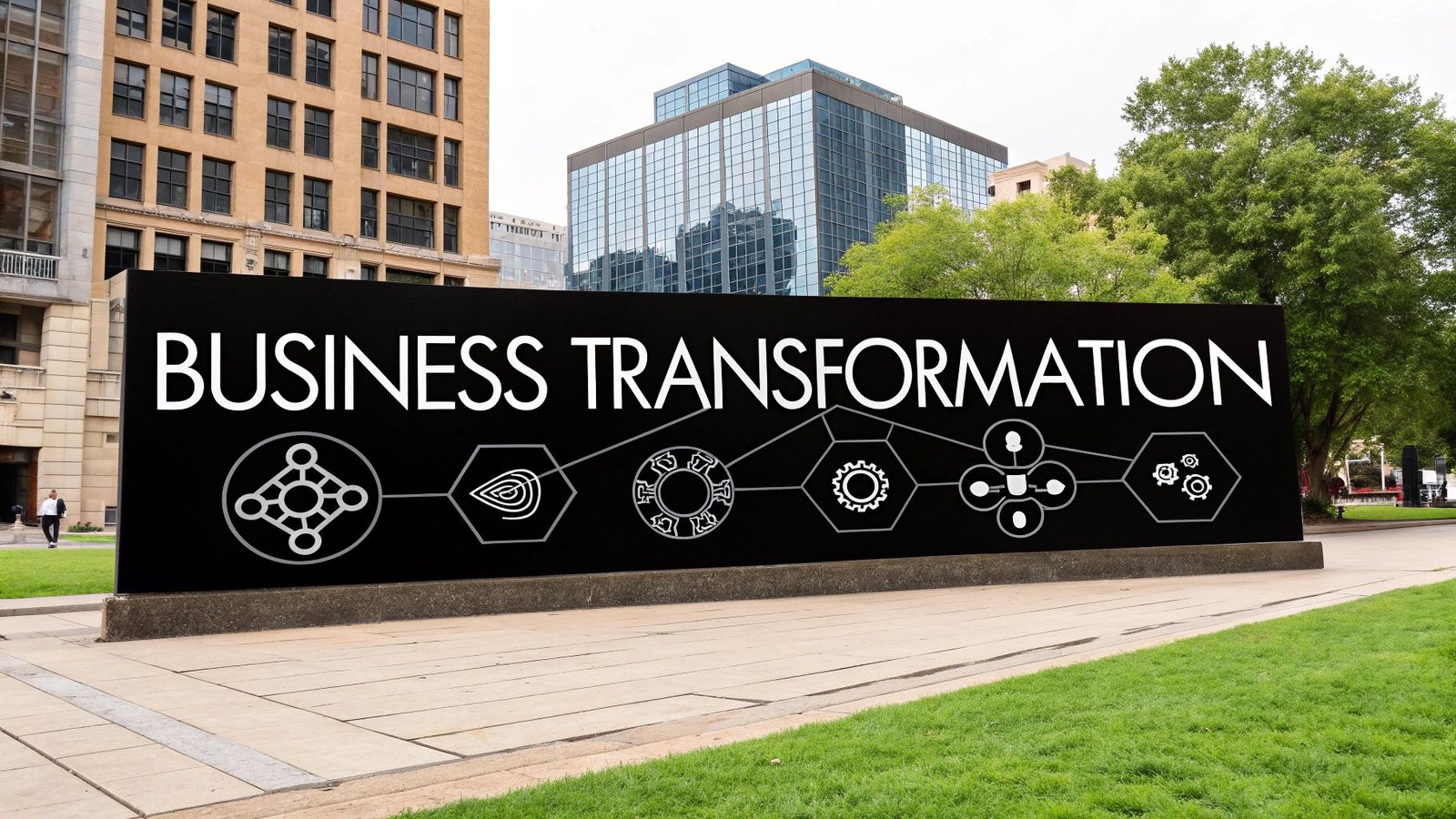Understanding Modern Functional Organizational Structures

Every business needs the right structure to succeed. The functional organizational model divides companies into specialized departments like marketing, finance, and operations. This approach helps teams develop deep expertise in their areas while maintaining clear reporting lines. However, it can also create challenges when departments become too isolated from each other.
Major companies like Starbucks, Amazon, and Apple use functional structures effectively. Each department focuses on its core responsibilities – HR handles people, marketing drives brand awareness, sales generates revenue. This specialization allows employees to build strong skills in their roles. You can learn more about how this works at AIHR's detailed guide. The key is finding ways for these specialized teams to work together smoothly.
Adapting the Functional Structure for the Modern Age
Many companies are updating the traditional functional model to be more flexible. One effective approach is creating temporary teams that pull people from different departments to work on specific projects. For example, when developing a new product, you might bring together engineers, marketers, and salespeople. This helps combine specialized knowledge while encouraging collaboration across department lines.
Fostering Collaboration and Communication
Breaking down barriers between departments takes conscious effort. Regular meetings between teams, shared project tools, and company-wide communication channels all help information flow more freely. Building a culture where people naturally work together matters too. When employees understand how their work connects to other departments and company goals, they're more likely to reach out and collaborate.
Clear Accountability Within Specialized Teams
While teamwork is important, each person still needs to know what they're responsible for. Well-defined roles and expectations help people take ownership of their work. Regular check-ins and clear performance metrics show how individual efforts contribute to team success. This makes it easier to spot where things are working well and where they need improvement.
Building a Thriving Functional Organization
Success with a functional structure requires balance. Companies need to let teams build deep expertise while making sure they don't become isolated. The key is creating ways for departments to work together effectively while maintaining clear roles and responsibilities. When done right, this approach helps companies develop strong specialized teams that can also collaborate to drive growth.
Mastering Matrix Management for Enhanced Performance

Most organizations rely on traditional department structures that promote specialized skills but often create barriers between teams. Matrix management offers a better way by combining vertical reporting lines with horizontal project teams. This dual structure enables companies to maintain deep expertise while encouraging people to work effectively across departments.
Balancing Vertical Authority with Horizontal Collaboration
At its core, matrix management creates a balanced system where employees report to both their department head and project leaders. For instance, a marketing specialist might get direction on brand standards from their Marketing Director while also working closely with a Product Launch Manager on timelines and deliverables. This setup takes careful coordination but allows teams to maintain quality standards while moving projects forward efficiently.
Optimizing Resources and Managing Complex Relationships
The real power of matrix management lies in its ability to make the most of people's talents. By having staff work on multiple projects, companies can tap into specialized skills exactly when needed. A great example comes from Statistics Canada, which uses matrix management to improve how they allocate resources and spot potential issues early. Their success shows that with good planning and open communication, organizations can avoid common pitfalls like overloading team members or creating conflicting priorities.
Maintaining Clarity Amidst Matrix Complexity
For matrix management to work well, everyone needs to understand their roles and responsibilities clearly. Here's what helps keep things running smoothly:
- Clear Role Definitions: Document exactly what each person should handle in both their department and project work
- Regular Updates: Hold frequent check-ins to keep everyone aligned and catch problems early
- Clear Problem-Solving Steps: Create a straightforward process for handling conflicts between department and project needs
These basic practices help people stay accountable while giving them room to apply their expertise effectively.
Fostering Cross-Functional Excellence
When done right, matrix management breaks down walls between departments and gets people working together naturally. Marketing teams gain practical insights from operations staff, while engineers learn directly from sales about customer needs. This natural mix of perspectives leads to better solutions and stronger results across the entire organization.
Strategic Growth Through Structural Evolution

Growing businesses face a key challenge – their organizational structure must change to match their expanding needs. Just like a plant outgrowing its pot needs replanting, companies need new frameworks to thrive as they scale. Let's explore practical ways organizations can adapt their structure for sustained growth.
Understanding the Need for Structural Change
Most companies start feeling growing pains when their current setup no longer serves their needs. Maybe teams are struggling to coordinate, decisions take too long, or responsibilities become unclear. For instance, a startup that began with everyone wearing multiple hats may need dedicated departments as the team expands. The key is spotting these signs early and taking action before problems compound.
Key Decision Points in Structural Change
Before making structural changes, companies should focus on three core elements. First, they need crystal-clear strategic objectives that define where they're heading. Second, they must assess their current organizational capabilities to identify what's working and what isn't. Third, they should consider the impact on company culture since structural changes affect how people work together.
Take the example of shifting to a matrix structure – it requires careful planning around roles, reporting lines, and team dynamics. Success depends on helping employees understand the "why" behind changes and equipping them with tools to work effectively in the new setup. You might be interested in: How to master your career.
Implementing Structural Change: A Smooth Transition
Making structural changes work requires more than just drawing new org charts. Companies need a clear roadmap with specific milestones and open communication channels. Getting employee input early helps address concerns and build support for changes. Training and ongoing support are also essential as people adjust to new roles and ways of working.
Consider Marian University in Indiana – starting with just 16 staff and 24 students in 1937, they grew steadily by adapting their structure to support expansion. By 1954, they had successfully transformed into a coeducational institution, showing how thoughtful structural evolution enables growth.
Maintaining Cultural Cohesion During Growth
Growth often tests company culture, but there are practical ways to keep teams united during change. Regular updates help everyone stay informed and aligned. Celebrating team wins, even small ones, maintains morale and reminds people why changes matter. Creating chances for different teams to work together helps break down barriers and builds lasting connections across the organization.
Avoiding Common Pitfalls
Watch out for three common mistakes during structural changes. First, rushing changes without a clear reason or plan usually backfires. Second, forgetting about the human side of change leads to resistance and poor adoption. Third, treating structural change as a one-time fix rather than an ongoing process means missing chances to improve. Being aware of these pitfalls helps organizations make smoother, more successful transitions that support their growth goals.
Optimizing Efficiency While Enhancing Stakeholder Value

Success in business requires finding the right balance between running smoothly internally and meeting external needs effectively. This means developing an organizational structure that works well for both employees and stakeholders. Getting this balance right takes careful planning and a clear understanding of what drives performance.
Frameworks for Evaluating and Enhancing Performance
Good organizational structures help companies track and improve their results in multiple areas. The most effective approach is measuring specific indicators like productivity rates, quality scores, customer feedback, and financial metrics. Regular check-ins and feedback systems also help create an environment where teams constantly look for ways to do better.
Building Systems for Productivity and Stakeholder Engagement
Companies need to create systems that help employees work efficiently while staying connected to stakeholders' needs. This means setting up clear ways to communicate, organize work, and collaborate as teams. For example, using the right project management tools helps teams work together more smoothly. Just as important is keeping stakeholders in the loop through consistent updates and actively responding to their feedback.
Statistical organizations face special challenges in this area. They must gather and share data efficiently while staying focused on what users need. Many adopt a mixed structure that combines subject experts with functional teams. For instance, Statistics Netherlands recently reorganized to better handle issues with timing, reporting workload, and changing user requirements. Learn more about these organizational challenges here: Statistical Organization Challenges. Their experience shows the benefits of keeping things simple, limiting management layers, and getting staff involved in making changes.
Measuring and Optimizing Organizational Effectiveness
Looking at financial results alone isn't enough to measure how well an organization works. A complete picture needs to include factors like how engaged employees are, what customers think, and how much innovation is happening. This might involve employee surveys, customer feedback programs, and tracking new ideas and improvements. By looking at all these pieces together, organizations can spot what's working well and what needs adjustment. You might be interested in: How to master career growth. This broader view helps companies keep getting better as markets and stakeholder needs change.
Real-World Examples of Balanced Organizations
Several companies show how to balance internal efficiency with stakeholder value well. Southwest Airlines stands out for its strong company culture and engaged workforce, which leads to happy customers. Google focuses on innovation and giving employees freedom, helping them attract great talent while creating excellent products. These examples show how taking care of both internal teams and external stakeholders creates lasting success and competitive edge.
Leading Successful Organizational Change
Organizations must evolve to stay effective. Making big changes requires careful planning to minimize disruption while getting the most value from new ways of working. Success depends on helping employees adapt smoothly while keeping daily operations running well.
Managing Resistance and Maintaining Momentum
People often resist change because they feel comfortable with familiar routines or worried about the unknown. Clear, honest communication makes all the difference. When leaders explain exactly why changes are needed and how they'll affect each person's role, it builds trust. Regular check-ins and chances for employees to share concerns help reduce anxiety.
Building momentum is just as important as managing resistance. Set specific milestones and give frequent updates on progress. Take time to celebrate small victories – it keeps everyone motivated and shows that the changes are making a real difference.
Operational Continuity and Successful Adoption
One of the biggest challenges is keeping things running smoothly during transitions. Breaking changes into smaller phases and running old and new systems in parallel can help prevent disruptions. While this takes careful coordination, it leads to much smoother transitions.
Simply announcing changes isn't enough – people need support to adapt. Provide thorough training on new processes and make sure employees have resources to learn their updated responsibilities. This investment pays off by creating a workplace where people embrace positive change. You might be interested in: How to master career growth.
Communication Planning, Timeline Management, and Risk Mitigation
Strong communication planning forms the foundation for successful change. Map out key messages, target audiences, and communication channels with clear timing. Being transparent and consistent helps manage expectations and maintain trust.
Realistic timelines keep changes on track. Build in extra time for unexpected delays and have backup plans ready. Regular timeline check-ins help catch potential problems early.
Smart risk management is essential. Think through what could go wrong – like key people resisting changes or technical issues. Have specific plans to address each potential problem. Taking these precautions helps prevent small issues from derailing the whole process.
Measuring Change Success and Maintaining Long-Term Gains
How do you know if changes are working? Set clear success metrics before you start. Track things like productivity, employee satisfaction, customer feedback, and financial results. Monitor these consistently to see the real impact.
Keeping positive changes going takes ongoing work. Regularly review how new structures and processes are working. Ask employees and stakeholders what's going well and what needs improvement. This focus on continuous refinement helps organizations stay adaptable and responsive.
Emerging Trends Reshaping Organizational Design
Organizations must evolve to stay relevant in our fast-moving world. As technology advances, workforce needs shift, and markets change globally, companies need nimble structures to succeed. Let's explore the key trends that are reshaping how organizations operate and adapt.
The Rise of Remote and Hybrid Work Models
Gone are the days when everyone worked in a central office. The pandemic accelerated the shift to remote and hybrid work, fundamentally changing how teams collaborate. Companies now need robust systems for virtual communication, project coordination, and measuring results. This means investing in tools like Slack and Microsoft Teams while setting clear guidelines for remote work. Managers must focus more on outcomes and deliverables rather than monitoring desk time.
Technology's Impact on Organizational Structures
Digital tools are reshaping company hierarchies and workflows in profound ways. Modern cloud platforms and project management systems allow for more fluid, responsive teams. This has led many organizations to adopt flatter structures where employees have more autonomy and decision-making power. Data analytics also plays a crucial role – teams can now make choices based on real insights rather than gut feelings, leading to smarter resource use and better results.
Incorporating AI for Enhanced Organizational Effectiveness
Artificial intelligence is becoming essential for daily operations rather than just a fancy add-on. AI helps streamline routine work, process vast amounts of data, and guide strategic planning. For example, customer service teams use AI chatbots to handle basic questions, freeing up staff for complex issues that need a human touch. This shift means companies must help employees develop new skills to work effectively alongside AI tools.
Adapting to Changing Workforce Dynamics
Today's employees bring diverse backgrounds, skills, and expectations to work. They want meaningful projects, schedule flexibility, and chances to grow professionally. Smart organizations are creating inclusive environments where different perspectives drive innovation. This includes offering flexible schedules, personalized training paths, and wellness programs. Companies must also bridge generational gaps, as teams often span several age groups with distinct work preferences.
Preparing for Future Challenges
Success tomorrow requires planning today. Organizations need to spot emerging trends early and adjust quickly. This means committing to ongoing learning, testing new technologies, and building adaptable teams. The key is finding the right balance – maintaining stability while being ready to change course when needed. Regular evaluation of organizational structures ensures they support both current needs and future goals.
Ready to take control of your career and navigate these evolving organizational landscapes? CareerTruth provides the guidance and resources you need to thrive in the modern workplace. Visit us today to start building the career you want.


